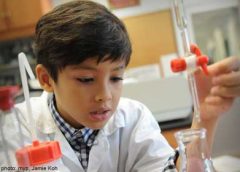By José Alberto Gaytán García *
At your house on Sunday morning I calmly read the news and tried to arrange documents and work for the following week. On this occasion, I did it accompanied by a flavorsome cup of coffee from Misantla, a gift from Professor Tito Armando Hernandez, head of industrial engineering and colleague of yours truly at the technology of Misantla. That’s how I found a bulletin from the National Polytechnic Institute (IPN) announcing the progress of a research project developed with the Autonomous Metropolitan University (UAM).
This interesting research seeks to resolve pollution problems caused by agro-industrial waste dumped outdoors. For that purpose, researchers and scientists from both institutions successfully study the characteristics of the tomato peel, as they discovered that it has bioplastic chemical properties that allow the creation of biodegradable materials.
The method applied by the Mexican scientists optimizes the chemical process to obtain the enzymes of the cuticle of the tomato, allowing its recovery by 45 percent. That recovery attraction applies enzymes to make drugs and chemical compounds with high environmental benefits. Without a doubt, this successful pioneering research in the field of biotechnology will put Mexican scientists on a par with the best in the world.
In Mexico, hundreds of tons of waste from fruits and vegetables are dumped annually in municipal outdoor garbage dumps. This treatment represents a problem of contamination of large dimensions, since just the tomato waste that is thrown from greenhouses and central corner stores, represents twenty percent of all vegetable waste. So taking advantage of this pollutant waste to transform it into biodegradable plastics is a matter of primary environmental and economic importance.
I thought it was interesting to discuss this research project because its development would be very useful for Veracruz, since our state is a national agricultural power that should reap the benefits of this project. For example, we are the number one producer in the country in sugar cane, chayote, lemon, orange, pineapple and grapefruit, according to production indicators of the Secretary of Agriculture, Rural Livestock and Fisheries.
The area of Martinez de la Torre and Misantla, are considered to be the second agricultural power in the State. Therefore, for Veracruz this research project is of utmost importance. We must follow its development closely and establish as soon as possible a line of academic cooperation with the institutions that run it.
jalbertogaytangarcia@gmail.com
A126R6/17
Acerca del autor

- José Alberto Gaytán García ha escrito artículos y ensayos de corte académico en diarios y revistas de México y de los Estados Unidos; ha participado en importantes proyectos académicos e impartido conferencias sobre temas de historia, tecnología y educación en el marco de las relaciones entre México y los Estados Unidos, tema en el cual realizó sus estudios de doctorado en The Graduate School of Internacional Studies de la Universidad de Miami.
 Cultura General10 agosto, 2022Michio Kaku: científico del futuro
Cultura General10 agosto, 2022Michio Kaku: científico del futuro Cultura General29 junio, 2020Miguel Alcubierre: viajero de las estrellas
Cultura General29 junio, 2020Miguel Alcubierre: viajero de las estrellas Cultura General6 abril, 2020Niños brillantes (Segunda parte)
Cultura General6 abril, 2020Niños brillantes (Segunda parte) Cultura General6 abril, 2020Niños brillantes (Primera parte)
Cultura General6 abril, 2020Niños brillantes (Primera parte)





